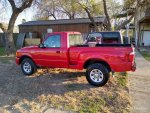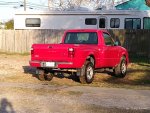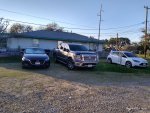I'll use some very examples here, and a very brief explanation of receiver design.
Receivers have various circuits within them to aid in improving reception. Basically, a signal is received and mixed to a common frequency called an IF (intermedia frequency). For FM broadcast receivers you have a band that is 20 MHz wide (108 - 88 = 20). Since we aren't interested in anything above and below those frequencies we want to eliminate them. So, a bandpass filter is used that only allows the frequencies we are interested in to pass through the filter and attenuates anything below 88 MHz or above 108 MHz In doing this we remove the potential for a very strong out of band signal from overloading the receiver's RF amplifiers. A good example of this is TV channel 6 that spans from 82 - 88 MHz. If you drive by a TV transmitter with an FM radio with a poorly designed receiver it may lower the gain of the receiver's amplifiers which will effectively reduce your ability to receive weaker FM stations. Another common problem is strong signals can generate something called IF images that will appear at the frequency of the original signal minus the IF. Receiver design is fairly good about this now, but in the past it wasn't uncommon to hear aircraft suddenly come over the top of an FM station because the aircraft band is just above the FM band. So, in this case the most common IF frequency for an FM receiver is 10.7 MHZ or 10.695 MHz. So, a strong signal at 116.6 Mhz would have an IF image 10.7 Mhz below it at 105.9 MHz, and every 10.7 MHz below that. Using a band pass filter that only allows signals between 88 and 108 MHz you reduce problems from the TV station below the FM band and the strong signals above the FM band. Alternatively, if you are only having problems from strong signals above or below the FM band you can use a high pass filter that only allows signals above 88 MHz to pass, or below 108 MHz. Televisions used to have some really poor receivers. One of the ham bands used to be where channel 1 was located (that's why TVs start with channel 2). Several problems could occur when there was a strong signal on the 6 meter band. One of them was co-channel interference to channel 2. Another was that the IF frequency for televisions was 45.75 MHz for video and 41.25 MHz for audio, which was close enough to be "overloaded" by a strong signal on 50 MHz. Since a television only needs to receive frequencies above 60 MHz, and high pass filter would attenuate anything below 60 MHz and reduce the possibility of both problems for the TV viewer.
You can also use the same concepts to use one feedline to multiple antennas on different bands by only allowing the frequencies for a specific band to reach the desired antenna. Those giant TV and radio transmitter towers you see that have five TV stations and 8 FM stations on the tower don't use 13 feedlines running to their antennas. They share feedlines to multiple antennas and pass the signal for channel 24 to the channel 24 antenna while preventing the signals from other channels from using that antenna.
















